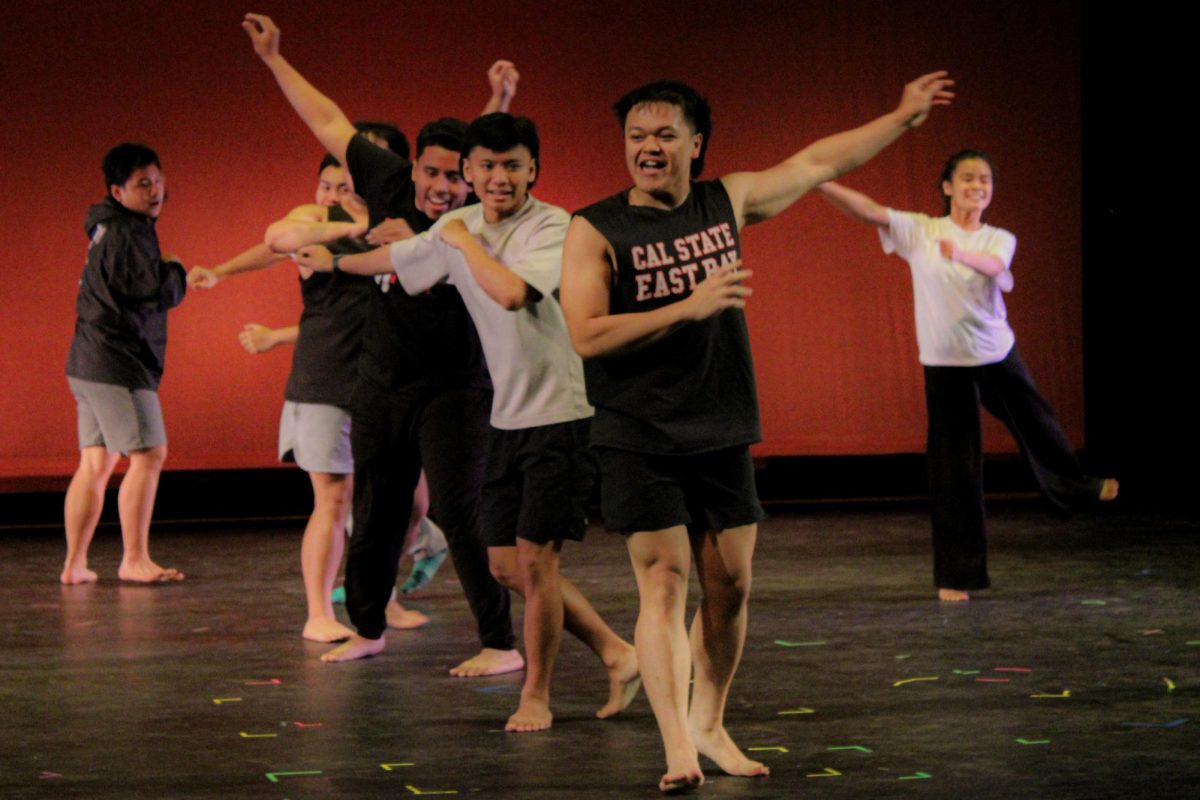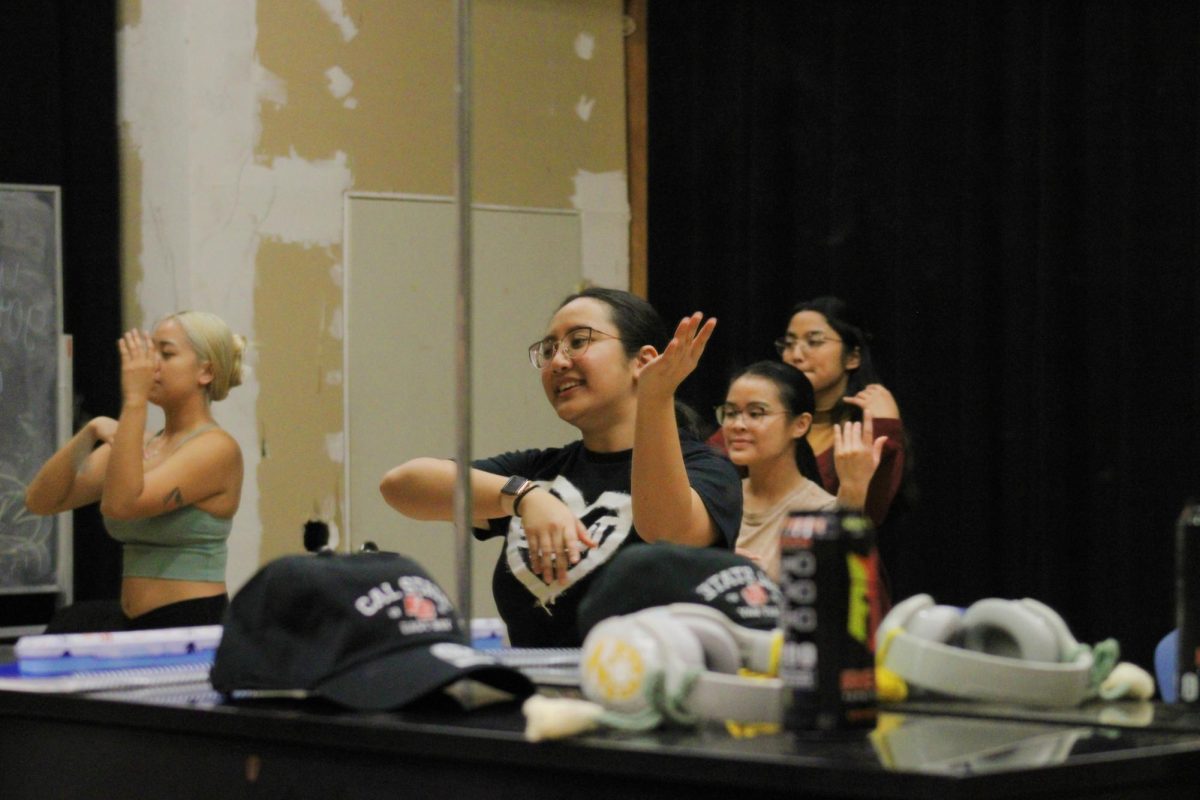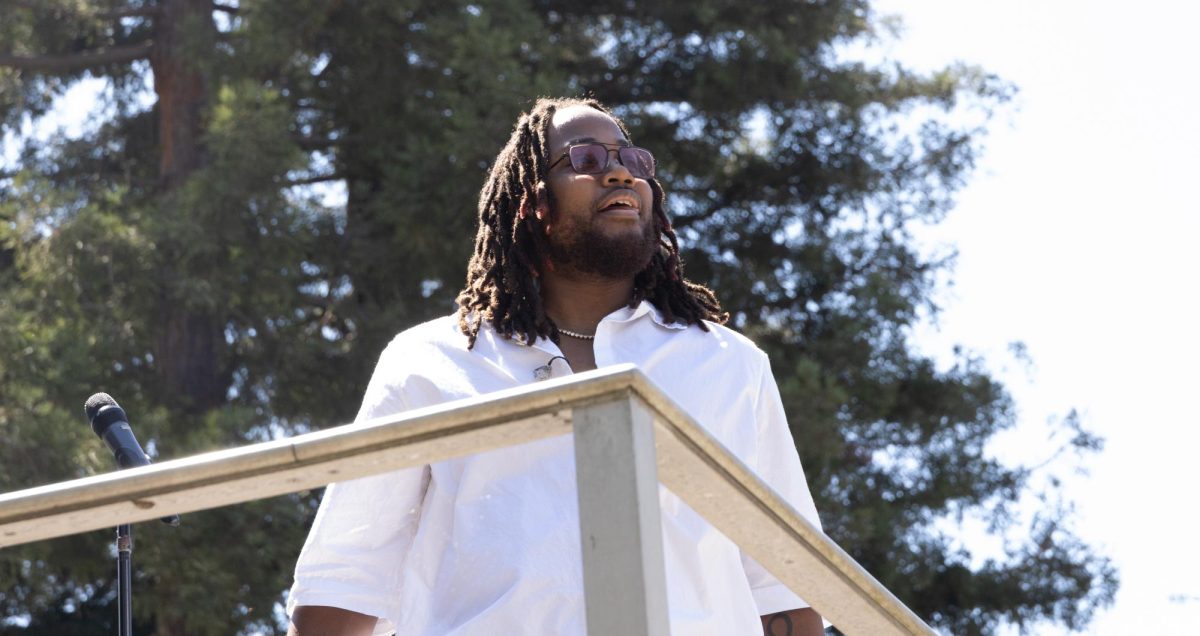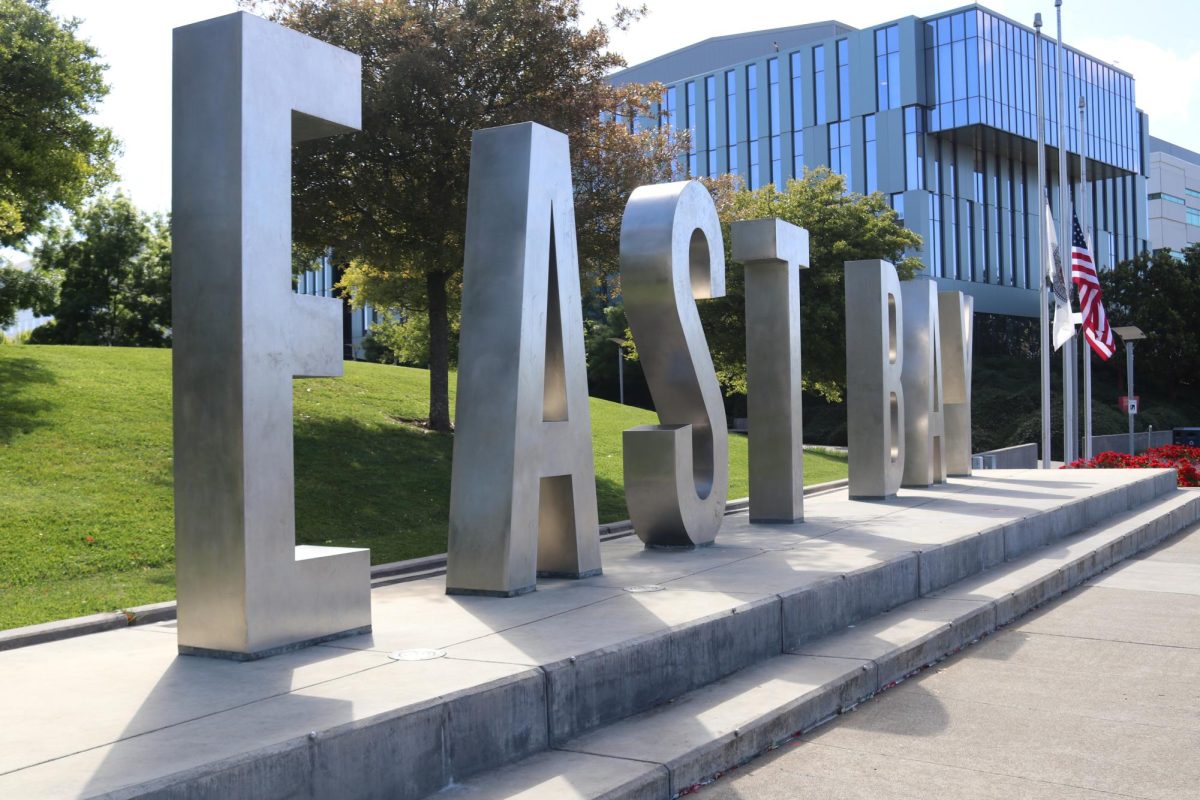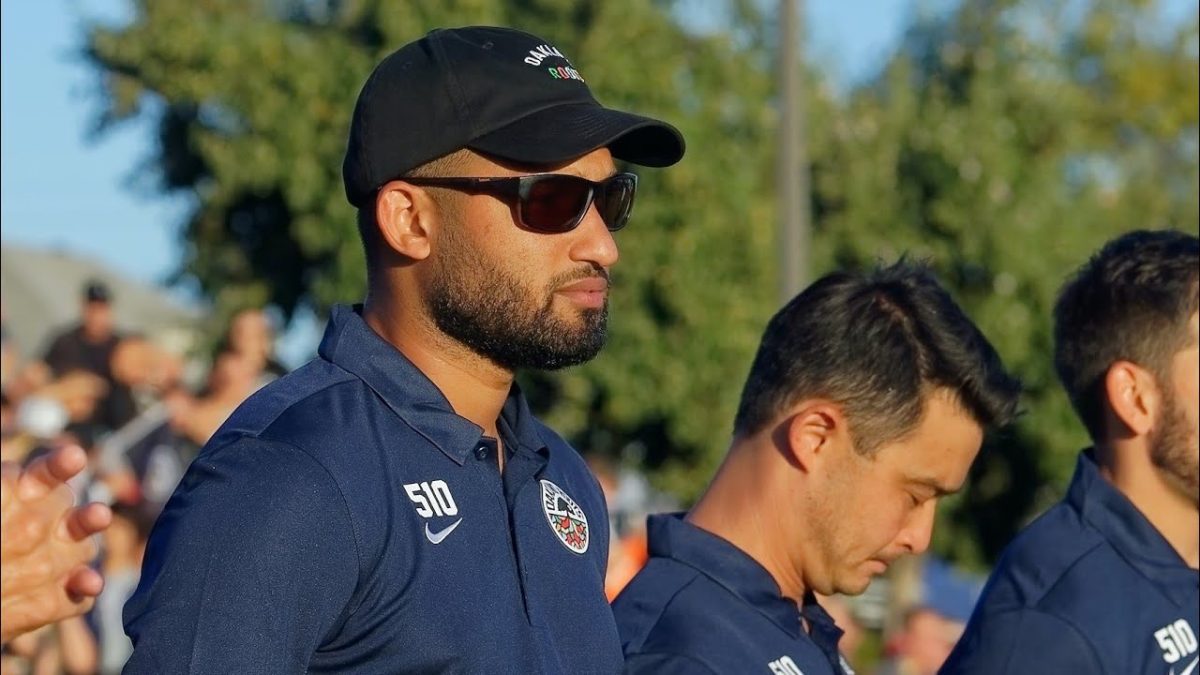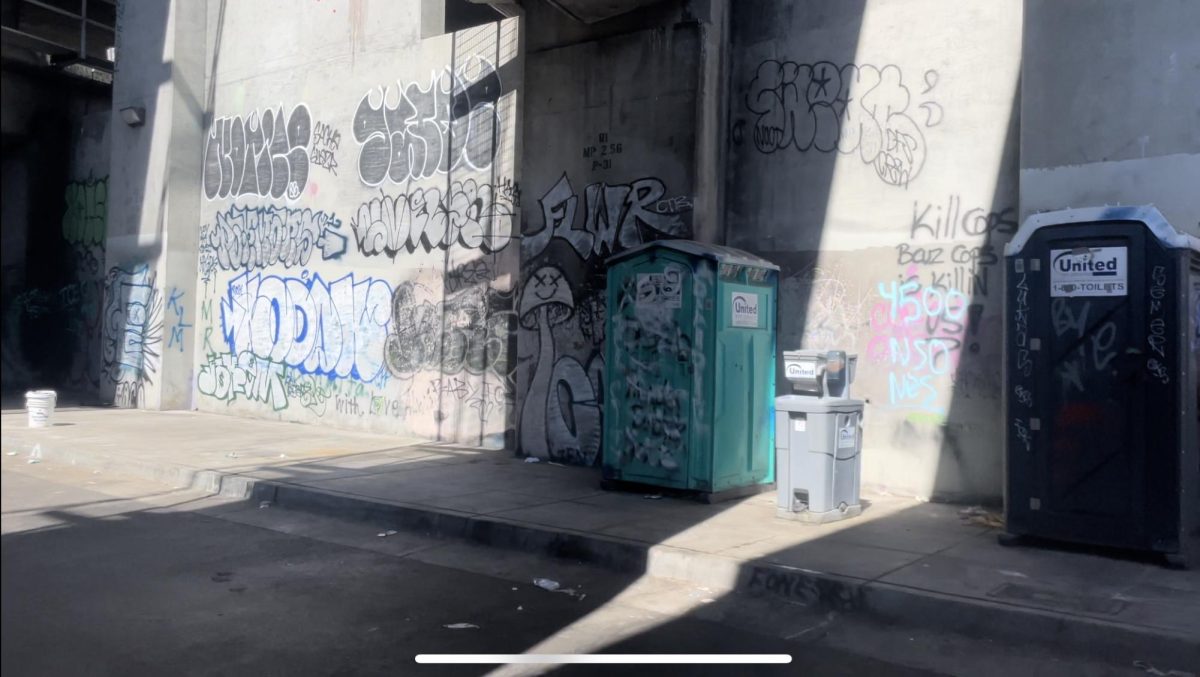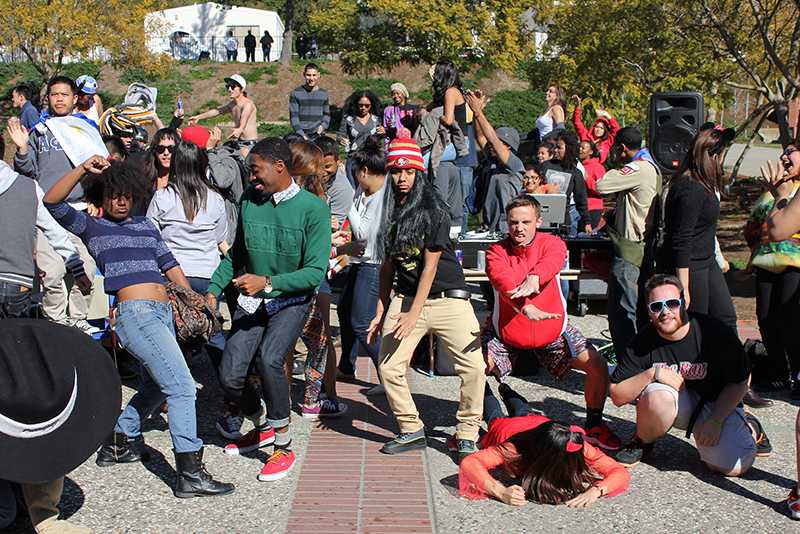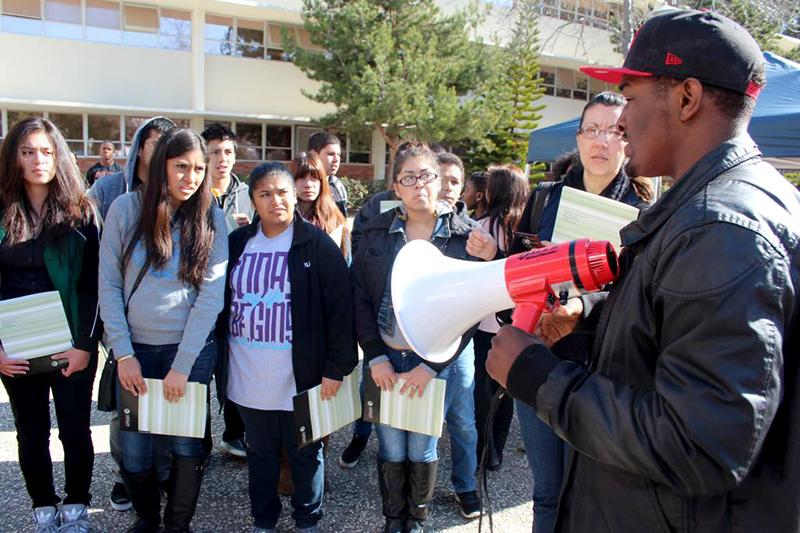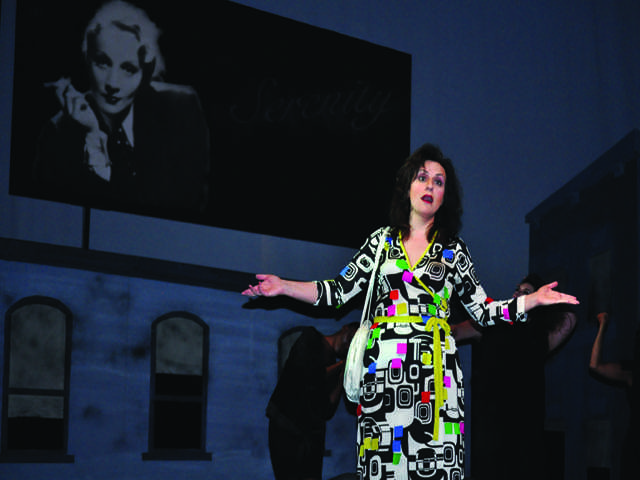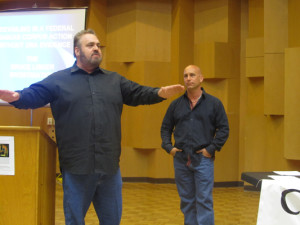
It’s a nightmare scenario taken straight out of a movie—being convicted of a murder that you did not commit.
Bruce Lisker lived that nightmare for 26 years until he was finally released from prison two years ago. What is worse is that Lisker had to live with the charge of murdering his own mother while the real killer roamed free.
On Tuesday Lisker and Paul Ingels, the man responsible for his freedom, spoke to a packed recital hall of criminal justice students on the CSU East Bay campus. The event, titled “Wrongful Convictions: The Case of Bruce Lisker,” was sponsored by the Department of Criminal Justice Administration and the CSUEB Forensic Science Club.
Ingels, who served as a decorated police officer in Pomona, California before becoming a private investigator in the Los Angeles area where he was first introduced to Lisker’s case, addressed the audience of largely future law enforcement professionals first.
“You’re going to have to make a decision whether you want to do it the right way or the wrong way,” said Ingels. “I’ve put over 15,000 felons in prison and I never had to lie about it.”
The message of keeping integrity in a profession often susceptible to corruption became abundantly clear, as Ingels launched into a detailed account of the events surrounding Dorka Lisker’s death.
“He was a troubled kid.He was addicted to drugs,” said Ingels of the 17-year-old Lisker, who arrived at his parents’ house in Sherman Oaks, Los Angeles midday on March 10, 1983 after running errands and searching for a job.
Like many teenagers, Lisker had legal troubles and was known to get into arguments with his mother, but he was shocked when he found her brutally murdered body lying on the living room floor. When the police arrived, Lisker was frantic and had removed the two knives that had been driven into his mother’s back.
In the chaos of the bloody crime scene, Lisker was taken into police custody. Detective Andrew Monsue of the Los Angeles Police Department almost immediately singled the grieving Lisker out as the prime suspect.
Citing the youth’s past and a slew of circumstantial evidence, Monsue and the District Attorney began to build their case.
“Our system is based on the fact that you are innocent until proven guilty,” said Ingels of the fundamental principle of American law that was not afforded to Lisker.
Ingels believes that the city’s case was fundamentally flawed, and that Lisker had been “put in jail by a cop wanting to further his career.”
Ironically, Lisker and his father quickly deduced the identity of the true murderer. Lisker had befriended the man, John Michael Ryan, after a stint in drug treatment, but distanced himself from Ryan after his violent tendencies and low character became known. Ryan, who would continue committing violent crimes until he committed suicide in 1996, visited the Lisker household the day before the murder. Even Ryan’s own mother would later tell a Los Angeles Times reporter that she believed her own son to be the true killer.
Case documents uncovered years later would show that Monsue had indeed questioned Ryan, only to clear him after failing to run a background check which would have shown a string of recent violent crimes.
Following the ill-fated trial and a murder conviction, Lisker’s chances of appeal fell to incompetent lawyers, one of whom admitted to stealing from him. As the years passed behind bars, his faith was tested, but he never gave up hope.
Which is why Lisker hired Ingeles to investigate a discrepancy he found in Monsue’s testimony to the parole board in 2000.
Very quickly, Ingles was able to obtain the court files through methods he described as, “push the envelope, be innovative, but don’t break the law.”
“That’s when I realized maybe he did not do it,” said Ingles.
The unapologetically brash former police officer who described himself as, “just a hillbilly from West Virginia,” took to the case with unflinching resolve until Lisker was released, a free man, in 2009.
After embracing Ingels with the emotions of his time in prison only two years removed, Lisker addressed the crowd, showing an incredible amount of forgiveness and acceptance.
“For this to happen to someone like me, it should let you know how easy it could happen to someone less fortunate,” said Lisker.
When asked if he harbors any resentment, he paused for a moment and answered, “No, of course the instinct to is human nature.”
“Life is 10 percent what happens to you and 90 percent how you react to it.”
Through the ultimate test of fire, Lisker somehow manages to not detest the criminal justice system.
“For those honest members of law enforcement, I have the utmost respect.”
Lisker knows all too well that there are also those he describes as “criminals with a badge.”
Addressing many who will soon face such moral imperatives, witnessed by the recent police controversies in Solano and Contra Costa counties, Lisker stated, “I want to leave you, if I leave you with anything, with the power you hold.”
More than a cautionary tale, Lisker’s story is a true human tragedy, as if the roles in Victor Hugo’s “Les Misérables” were reversed, with the convict Jean Valjean chasing the inspector Javert, as Lisker chased the villainous Monsue. Only in this story, the villain never gets his just dues—Monsue has since retired from the LAPD after numerous promotions, with full honors and privileges still bestowed.
However, redemption is found, and, in the face of unspeakable adversity, the resilience of the human spirit prevails.






